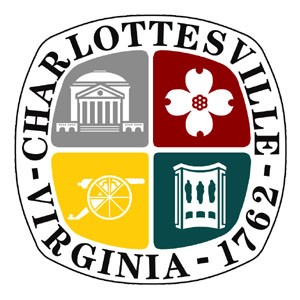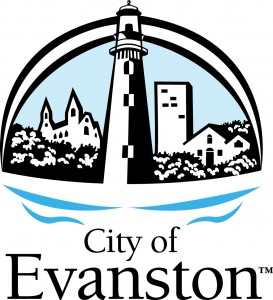23
Apr
Two New Local Policies Showcase the Good and the Bad of IPM
(Beyond Pesticides, April 23, 2015) Just in time for Earth Day, two localities took action this week to advance their own pesticide policies. The city of Evanston, IL improved upon its previous IPM policy by announcing a new pilot organic land care program on five city parks, however, Charlottesville, VA put in place an Integrated Pest Management (IPM) policy which codifies existing efforts by city officials, yet lacks clear and concise efforts to reduce dependency on toxic chemicals.
 Disappointment in Charlottesville, VA
Disappointment in Charlottesville, VA
Despite pressure from local advocates, including over 1,000 signatures from community members, the city of Charlottesville, VA merely adopted a pest management policy that makes official practices that were already in place for the past ten years. Though one could argue that enacting a formal policy is a step in the right direction, the new policy does not address recommendations advanced by local environmentalists, which called for an increase in organic-compatible products while reducing harmful synthetic pesticides.
The local advocates, part of the Piedmont Group of the Sierra Club, were pushing for pesticide-free parks and school grounds throughout the city of Charlottesville. According to John Cruickshank, chairman of the local chapter, at the very least, there should be a waiver process for pesticide use, which would come from the city manager. “Synthetic chemical pesticides should not be used unless all other options fail,” Mr. Cruickshank told Charlottesville Tomorrow back in February. “Our campaign is focused on city parks, school grounds and any other property maintained by the city. That could include the traffic islands, roadsides and the flower pots on the [Downtown] Mall.”
However, the actual IPM plan that the town adopted drastically falls short of the recommendations by the local groups. Though the resolution states that efforts will be made to minimize the use of pesticides, there are no required measures in place to ensure that this will actually happen. The plan states that it will: eliminate significant threats caused by pests to the health and safety of staff and the public; prevent loss or damage to City owned assets or property by pests; protect environmental quality; and will over time progressively move to reduce chemical pest controls. General strategies of the IPM program include selecting a pest management approach that is based on current information, and available financial and human resources. While it does push for structural modifications and non-pesticide technologies, it is vague in allowing the use of “appropriate pesticide compounds” that present the “lowest potential hazard to humans and the environment in the most effective manner,” and calling for the evaluation and use of non-synthetic pesticide products only as a final step. The good news is that according to Brian Daly, parks and recreation director, the city will be providing 24-hour advance notice of applications on school property, and posting notifications will be made available for 24 hours following any pesticide application.
The problem with the city of Charlottesville’s IPM plan echoes Beyond Pesticides’ concern with the general use of the term IPM, which can have different definitions and methods of implementation, meaning virtually anything the practitioner wants it to mean. The term has largely been co-opted by the chemical-dependent programs masquerading as IPM, and often allows for use of hazardous, synthetic pesticides as one component in the “toolbox” of options available to manage a pest problem. However, those who argue that IPM requires the ability to spray pesticides immediately after identifying a pest problem are not describing IPM. Thus, Beyond Pesticides has, in recent years, worked with local communities to shift the focus from IPM policies for playing fields, gardens, and turf to organic land management policies, while advocating for strong, well-defined structural IPM practices for indoors.
 Improvements in Evanston, IL
Improvements in Evanston, IL
To mark the fifth anniversary of the city’s pesticide reduction policy, the city of Evanston, IL will launch a new pesticide-free park program on five of the city’s parks. The local parks, Ackerman, Burnham Shores, Eiden, Perry, and Trahan, will all be maintained without the use of pesticides for one year, and, if successful, the program will be extended expanded to include more parks. The program is being launched with the help of the local company Greenwise Landscaping & Lawn Care Services, along with the Midwest Pesticide Action Center. Instead of relying on chemical pesticides, the city will utilize organic management methods, including high mowing to increase root strength and shade out weeds, and focus on improving soil health for natural weed resistance.
“The City of Evanston strives to keep our parks a healthy place for all our residents and visitors to enjoy, and we are excited to launch this Pesticide-Free Parks Pilot Program, which is our largest Adopt-a-Park partnership to date,” said Evanston’s Public Works Department Assistant Director Paul D’Agostino.
The city’s initial reduction policy, the City of Evanston sustainable Pest Control and Pesticide Reduction Policy, which passed in the spring of 2010, requires city employees, agent employees, agents and contractors to follow natural lawn care and “least-toxic Integrated Pest Management” (IPM) and prohibits high hazards pesticides. Unlike Charlottesville’s policy, Evanston’s does at least define which pesticides are prohibited on city property, including:
- U.S. EPA known, probable, likely, possible or suspected carcinogens;
- U.S. EPA Toxicity Category I and II pesticides (These pesticides are identified by the words ”˜DANGER’ or ”˜WARNING’ on the label); and,
- Chemicals known to the state of California to cause cancer or reproductive toxicity (Proposition 65).
“Greenwise loves this opportunity to give back to the community we call home and is thrilled to partner with the Evanston to promote organic land management,” Marc Wise, the founder of Greenwise said. “This is a great way to tell the folks of Evanston to get out and enjoy your parks.
In addition to the five pesticide-free parks, the city is encouraging residents to follow the city’s example by providing natural lawn care tips on their website. Specifically, the city urges residents to follow four simple, cost-effective strategies in their own yards: water 1”per week; mow 3” high; use organic fertilizers; and weed naturally.
Organic Land Management: A Growing Movement
There are many alternatives for safer lawn care, which reduce pest and weed pressure through a “feel the soil” approach that centers on natural, organic fertilization, and proper cultural practices such as correct mowing height, aeration, and overseeding. Creating a toxic-free lawn is possible when you understand why weeds occur in the first place, and take steps to eliminate conditions that allow their growth. And, given the alarming health effects of the 30 most commonly used lawn pesticides, it’s no surprise that there is a growing demand from local communities to regulate pesticides in a way that prevents the pollution of local waters, and stops putting residents at risk of pesticide-induced diseases.
Take Action: Are you interested in getting a strong policy passed in your community? See Beyond Pesticides’ How to Start Your Own Local Movement factsheet. We also have a model ordinance and implementation plan that outlines exactly how municipalities, lawn care operators and homeowners can create healthy lawns and landscapes without relying on hazardous pesticides. You can also call (202-543-5450) or email ([email protected]) for one-on-one consultation about the strategies you can take to have an impact.
All unattributed positions and opinions in this piece are those of Beyond Pesticides.










